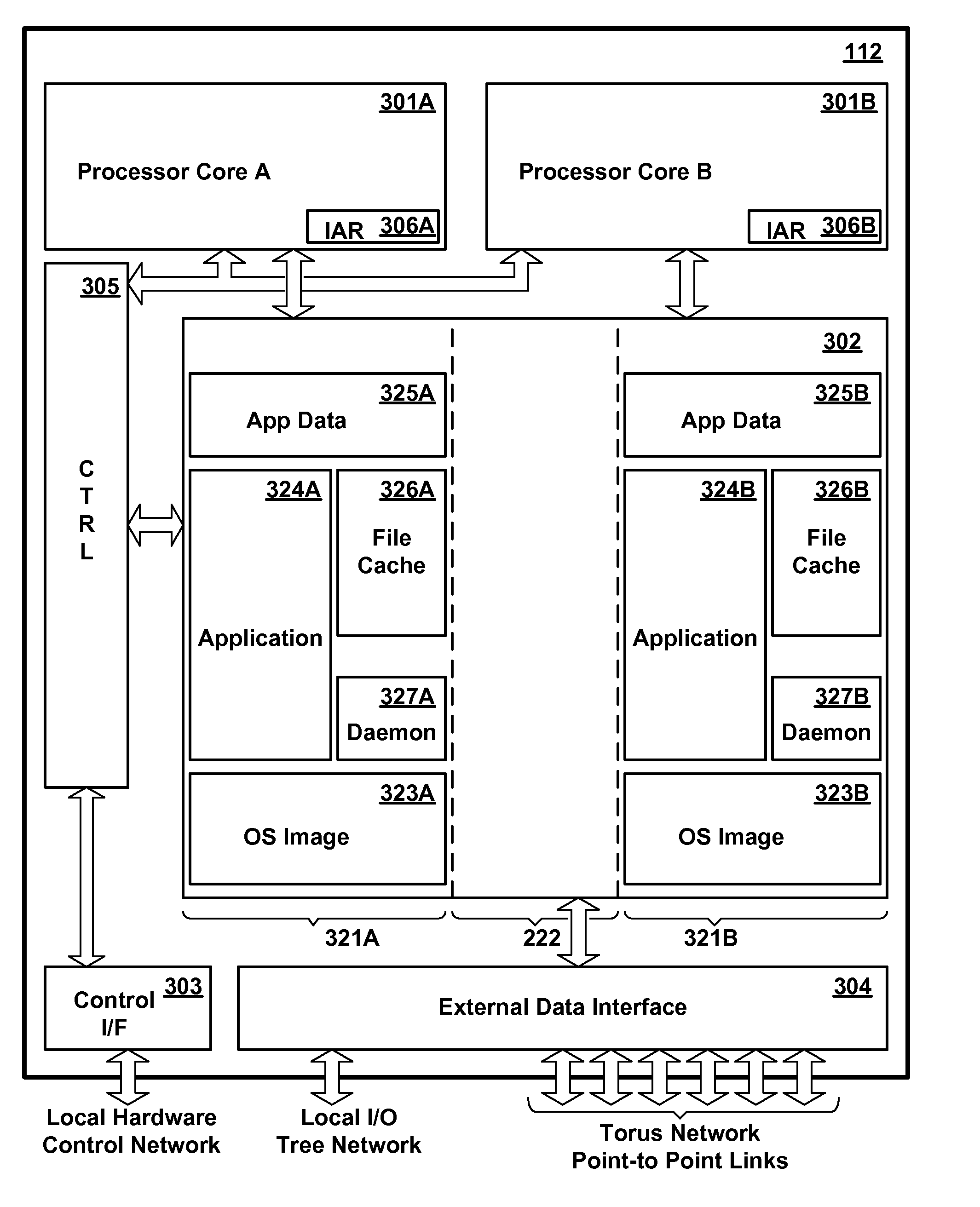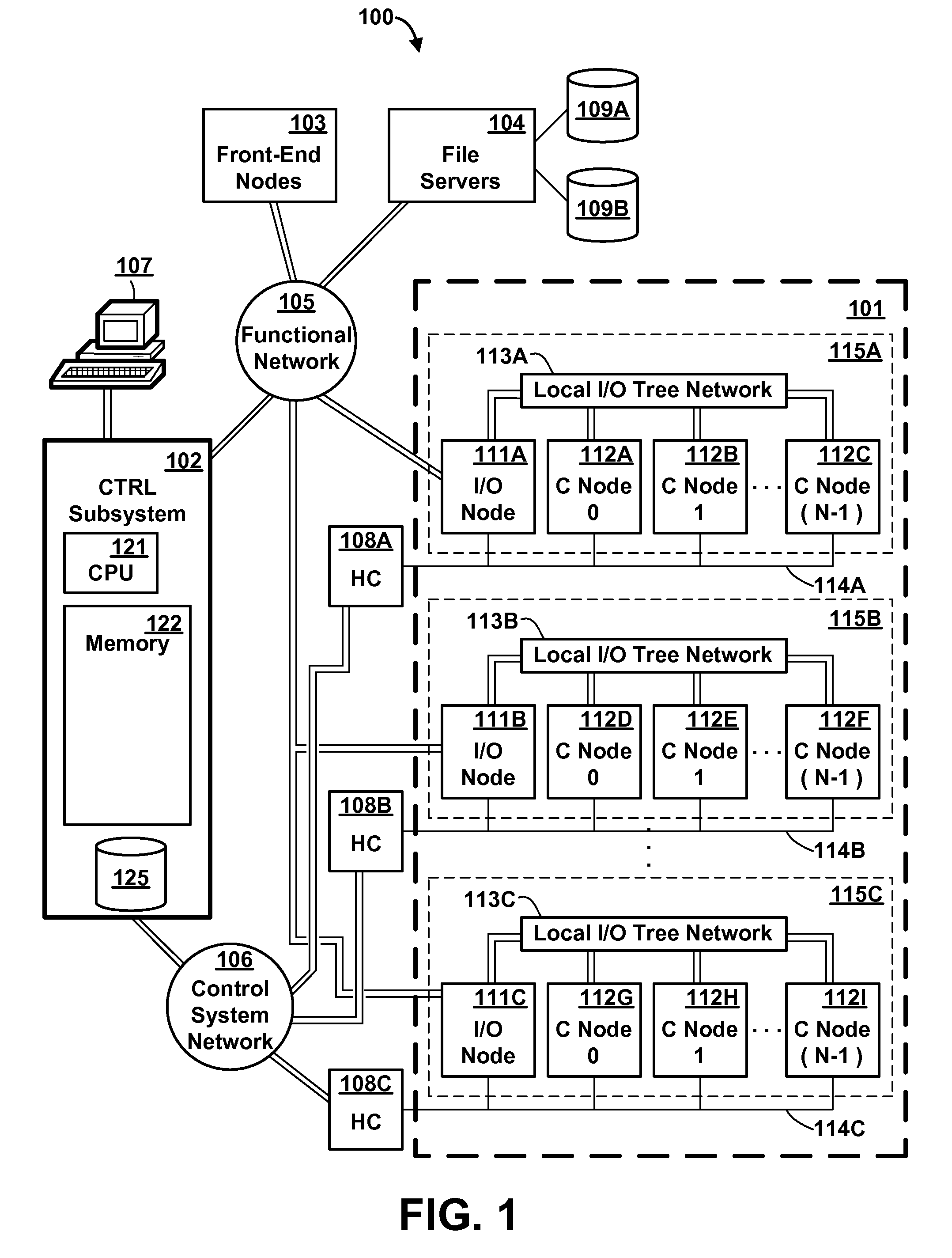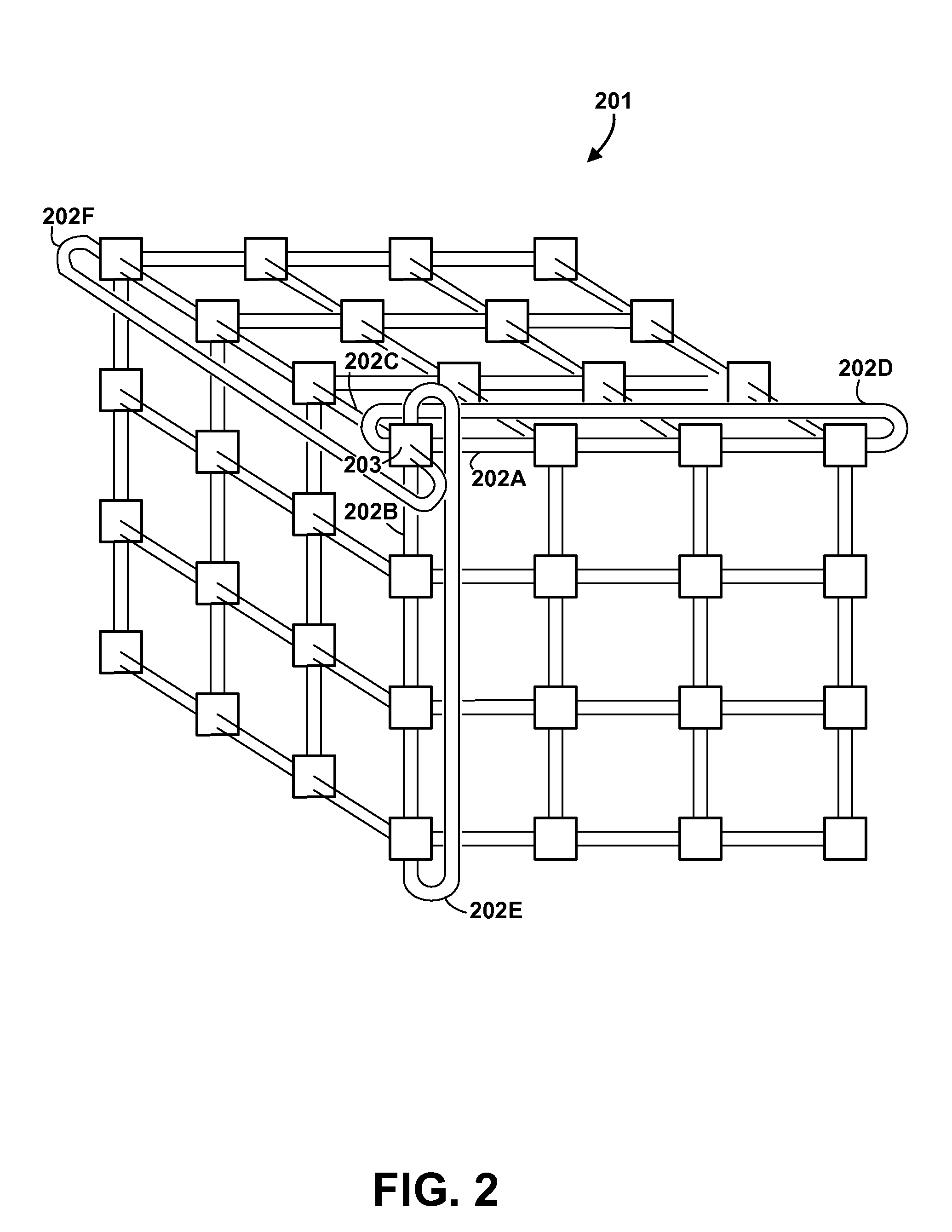Memory Request/Grant Daemons in Virtual Nodes for Moving Subdivided Local Memory Space from VN to VN in Nodes of a Massively Parallel Computer System
a computer system and virtual node technology, applied in the field of digital data processing, can solve the problems of considerable overhead complexity in ensuring data integrity, and achieve the effect of little overhead in implementation
- Summary
- Abstract
- Description
- Claims
- Application Information
AI Technical Summary
Benefits of technology
Problems solved by technology
Method used
Image
Examples
Embodiment Construction
[0029]Referring to the Drawing, wherein like numbers denote like parts throughout the several views, FIG. 1 is a high-level block diagram of the major hardware components of a massively parallel computer system 100 in accordance with the preferred embodiment of the present invention. In the preferred embodiment, computer system 100 is an IBM Blue Gene™ computer system, it being understood that other computer systems could be used, and the description of a preferred embodiment herein is not intended to limit the present invention to the particular architecture described. Additional background information concerning the architecture of an IBM Blue Gene™ computer system can be found in the following commonly owned, copending U.S. patents, patent applications and PCT application designating the United States, each of which are herein incorporated by reference:
[0030]U.S. Pat. No. 7,313,582, issued Dec. 25, 2007, entitled “Arithmetic Functions in Torus and Tree Network”;
[0031]U.S. patent ...
PUM
 Login to View More
Login to View More Abstract
Description
Claims
Application Information
 Login to View More
Login to View More - R&D
- Intellectual Property
- Life Sciences
- Materials
- Tech Scout
- Unparalleled Data Quality
- Higher Quality Content
- 60% Fewer Hallucinations
Browse by: Latest US Patents, China's latest patents, Technical Efficacy Thesaurus, Application Domain, Technology Topic, Popular Technical Reports.
© 2025 PatSnap. All rights reserved.Legal|Privacy policy|Modern Slavery Act Transparency Statement|Sitemap|About US| Contact US: help@patsnap.com



